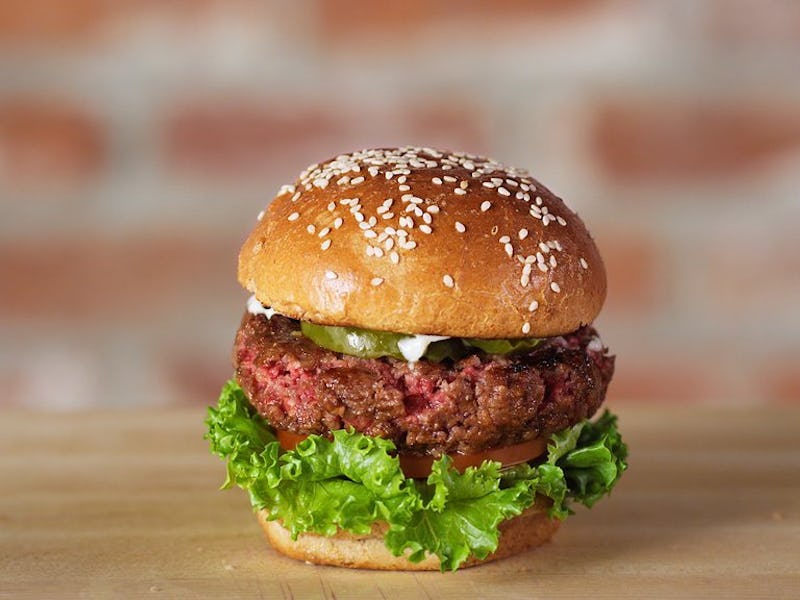Venture capital investment in engineered food is up, signaling a future where our hamburgers will be grown in a lab.
A recent industry trends report by CB Insights, finds that “smart money” VC interest in high-tech food has risen in general and one data point stands out: In two years, the cost of a single, lab-grown beef patty dropped from $325,000 to just $11.
That brings cultured meat within the price range of a fast-casual meal. Applebee’s, for one, will sell you its Triple Bacon Burger topped in bacon, cheddar, and barbecue-bacon-ranch sauce — with a side of fries — for $10.99.
While the sudden price drop for lab-grown beef is astonishing, it’s also misleading. The larger figure comes from a 2013 press event where Mark Post, a researcher at Maastricht University in the Netherlands, debuted a single five-ounce patty, produced for the enormous sum of $325,000. It was pure animal muscle tissue — no fat — and reportedly didn’t taste great.
How muscle tissue is grown in culture in a lab. Mark Post's cultured beef burger was the the result of researchers growing muscle strands this size -- thousands of times.
Two years later, Post said in an interview with an Australian news station that it may be possible to produce a kilogram of cultured beef for $80, or a little more than $11 per five-ounce patty. Assuming that figure had been converted to Australian dollars, you’re looking at about $8.50 USD.
Saying the meat could potentially be produced at that price point is a lot different from actually doing it. And there are other hurdles to overcome — currently the process uses fetal calf serum to feed the muscle tissue stem cells, which then reproduce and grow to form the cultured meat. Using animal products to feed the tissue defeats the whole point, which Post freely acknowledges, though he counters that one day he’ll come up with a vegan alternative.
Meat classic
And the $8.50 price tag, assuming we get there, just covers the production of the meat. By the time it’s delivered, cooked, and served to your plate, it’s going to cost a lot more than lunch at Applebee’s.
The long game here is that over the coming decades the environmental costs associated with industrial meat production are going to climb high enough to kibosh the whole operation, or at least a large chunk of it. The resulting gap between supply and demand might be filled by something like Post’s burger, which is real animal tissue grown outside the animal itself — or it might look more like the Impossible Burger, a fully vegan alternative engineered to taste like real, bloody beef.
The secret is heme, an iron-rich compound that gives meat its red color and bloody flavor. And, unlike cultured beef, the Impossible Burger can be consumed today for between $14 and $19 at certain trendy restaurants in San Francisco, Los Angeles, and New York. They could charge more — the restaurants have been overwhelmed by demand for the much-hyped product and have instituted restrictions to manage the limited supply. Jardinière in San Francisco, for example, begins handing out vouchers each day at 5 p.m. for the burgers, which start serving at 7:30.
"Though not commercially scaled" is the key qualifier.
But the real question is if demand will stay high, if and when Impossible Foods can manufacture and distribute the fake beef on a scale that will make a difference. In the long run, though, humans are going to have to seriously consider the question of how to pull more carbon back out of the atmosphere than is being released. In that context, a traditional carnivore diet will be a very expensive proposition, and alternatives will start to look a lot more appetizing.
